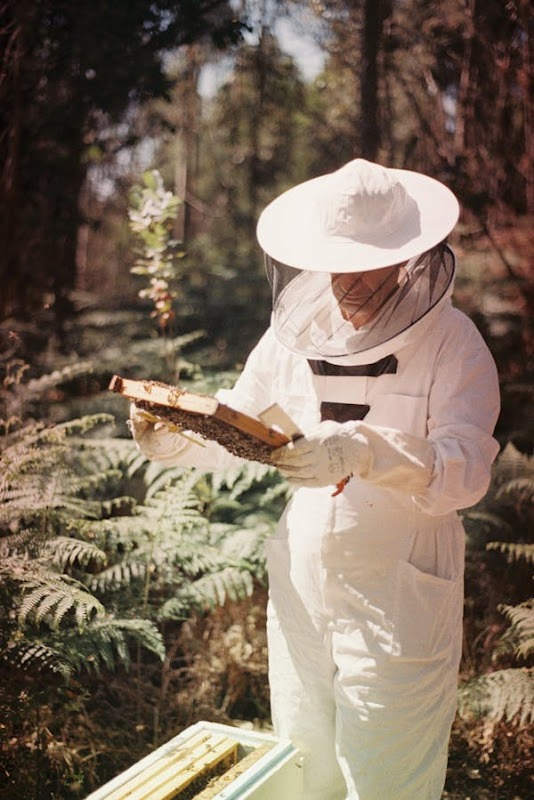Beekeeping, often regarded as a serene pursuit in the realm of agriculture, demands more than just a fascination with bees and honey. It requires a keen understanding of safety protocols and the right equipment, with perhaps none more crucial than the Suit for Bees. This article delves into the significance of this essential gear, exploring its components, importance in beekeeping practices, and tips on selecting the right suit for varying beekeeping needs.
Introduction to Beekeeping and the Suit for Bees
Beekeeping, or apiculture, has evolved from a traditional practice into a modern-day industry catering to both hobbyists and commercial enterprises. At its heart lies the interaction between humans and bees, where the beekeeper’s role extends beyond harvesting honey to ensuring the well-being of their colonies. Central to this role is the Suit for Bees, designed to shield against the stings of bees which, though crucial to their defense, can pose risks to humans.
Components of a Suit for Bees
A typical suit for bees comprises several essential components crafted to provide comprehensive protection while maintaining comfort and ease of movement. These components include:
- Overall Suit: Often made from lightweight, breathable fabric such as cotton or polyester, the suit covers the entire body from neck to ankle.
- Veil: Attached to the suit or as a separate piece, the veil is a mesh screen that protects the face and neck, crucial areas vulnerable to bee stings.
- Gloves: Long, durable gloves made from materials like goatskin or leather, offering protection while allowing dexterity for handling hive components.
- Boots: Some suits integrate boots or include attachments for securing them, ensuring bees cannot enter from the bottom of the suit.
Importance of the Suit for Bees
Protection Against Bee Stings
The primary function of the suit for bees is to provide a physical barrier against bee stings. Bee stings can trigger allergic reactions in susceptible individuals, ranging from mild discomfort to severe health complications. For beekeepers, particularly beginners, the suit offers peace of mind and safety during hive inspections and honey harvesting.
Maintaining Beekeeper Confidence
Beyond physical protection, the suit for bees instills confidence and reduces anxiety during hive management tasks. Experienced beekeepers understand the importance of remaining calm around bees to prevent triggering defensive behavior. The suit acts as a psychological buffer, allowing beekeepers to focus on their tasks without undue worry about potential stings.
Promoting Hive Health and Productivity
A calm and protected beekeeper is crucial for maintaining hive health and productivity. Unchecked anxiety or fear can disrupt hive activities, leading to defensive responses from bees and potentially harming colony dynamics. By minimizing the risk of stings, the suit for bees enables beekeepers to work methodically and attentively, ensuring optimal conditions for bee development and honey production.
Selecting the Right Suit for Your Needs
Choosing the appropriate suit for bees depends on various factors, including climate, personal comfort preferences, and the intensity of beekeeping activities. Key considerations when selecting a suit include:
- Material: Opt for breathable fabrics that provide adequate ventilation while offering protection against stings.
- Fit: The suit should fit snugly without being restrictive, ensuring bees cannot access the interior.
- Accessories: Consider additional features such as reinforced seams, elastic cuffs, and pockets for hive tools, enhancing convenience during use.
Tips for Using and Maintaining Your Suit for Bees
Once equipped with the right suit for bees, proper use and maintenance are essential for longevity and effectiveness:
- Inspect Before Use: Check the suit and accessories for any damages or wear before each use.
- Washing Instructions: Follow manufacturer guidelines for washing to maintain fabric integrity and hygiene.
- Storage: Store the suit in a cool, dry place away from direct sunlight and potential pests.
- Repair and Replace: Promptly repair any tears or damages to ensure continued protection. Replace worn-out components as needed.
Conclusion
In conclusion, the Beekeeping Gear stands as more than just protective gear—it embodies the careful balance between human interaction and respect for nature’s complex ecosystems. From safeguarding against stings to fostering a conducive environment for beekeeping activities, this essential gear plays a pivotal role in the practice and culture of apiculture. Whether you are embarking on your first hive inspection or managing a thriving apiary, investing in a quality suit for bees ensures not only your safety but also the well-being and productivity of your bee colonies. Consider exploring premium beesuits for enhanced comfort and durability, ensuring a rewarding and sustainable journey in beekeeping.
Additional Resources
For further reading on beekeeping essentials and selecting the right gear, explore reputable beekeeping associations, online forums, and educational resources dedicated to apiculture and hive management. Understanding the nuances of beekeeper safety and equipment empowers beekeepers to enjoy a rewarding and sustainable journey in apiculture.
FAQs about Beekeeper’s Suits
1. Why do beekeepers wear suits?
Beekeepers wear suits to protect themselves from bee stings. The suit acts as a barrier against bees, preventing stings and reducing the risk of allergic reactions.
2. What are beekeeper’s suits made of?
Beekeeper’s suits are typically made of lightweight, breathable materials such as cotton or polyester. The fabric provides protection while allowing ventilation to keep beekeepers cool during hive inspections.
3. Do beekeeper’s suits come with veils?
Yes, most beekeeper’s suits come with attached veils or separate veils that protect the face and neck. The veil is made of a fine mesh that allows beekeepers to see clearly while keeping bees away from their face.

